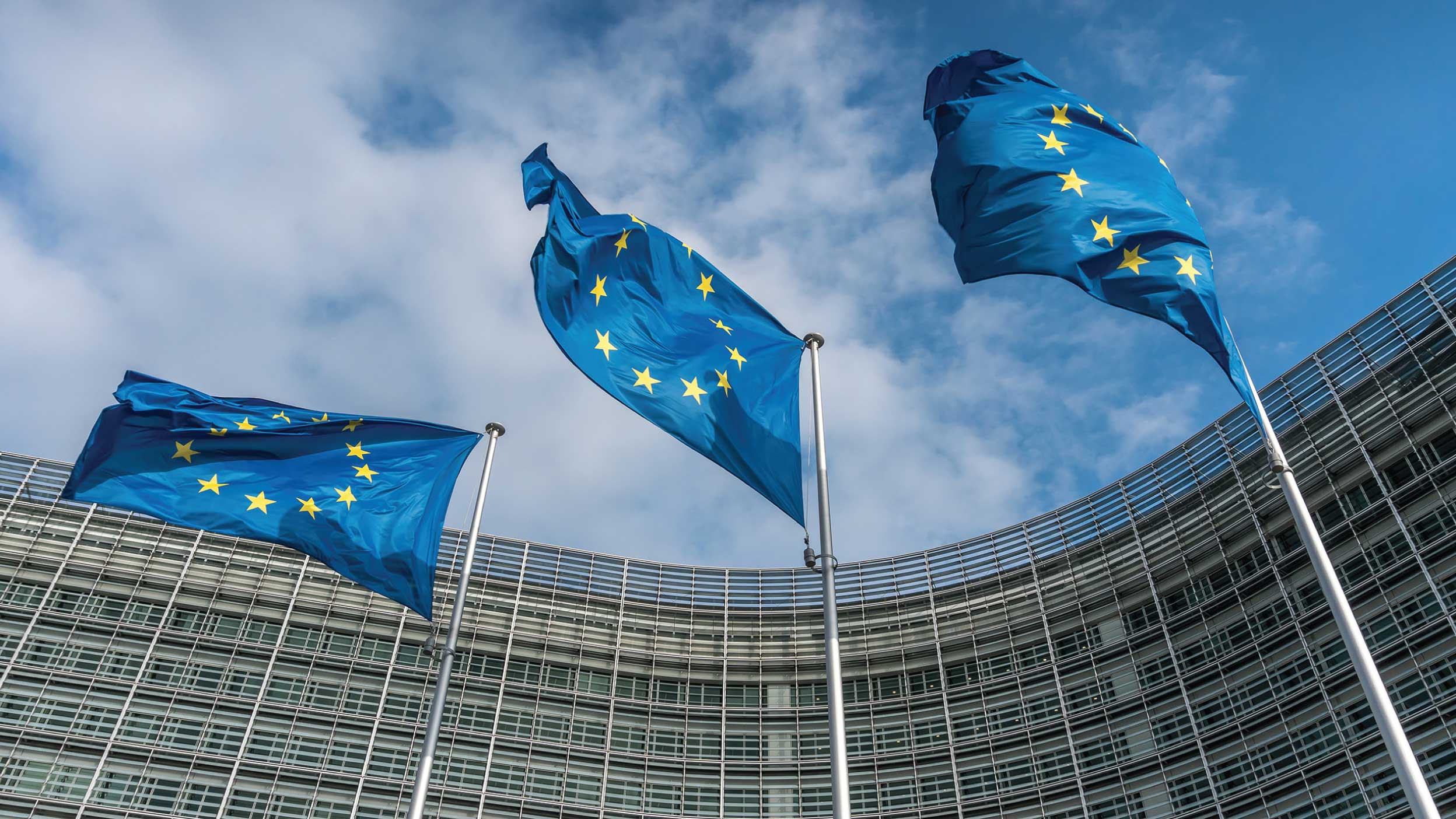
European stock markets surge as US stock market sags
European nations prepare to invest in defense and infrastructure, while the US faces the possibility of recession brought on by government spending cuts.

While the EU is better prepared for trade frictions with the US this time around, the Commission President lacks pre-existing strong links to the Trump cabinet. This could hamper the EU’s ability to conduct successful negotiations.
Trump’s impact on European security, trade, climate change efforts and relations with China are top of the list of the EU’s concerns.
With Germany and France focused on domestic politics, and Italian Prime Minister Meloni spotting an opportunity to be Trump’s key European interlocutor, maintaining EU unity could be challenging.
Most governments in Europe were hoping for a Harris victory. With Donald Trump now installed as President-elect, the European Commission President’s team is seeking to establish links to Team Trump and find common ground. European governments are better prepared for a Trump presidency relative to 2016, but they have big concerns and could struggle to demonstrate unity.
Donald Trump made multiple threats against European interests over the course of the electoral campaign. Some weeks after the election, it remains unclear if, when and how these threats might ultimately materialise, but the EU is most concerned about four key areas: defence, trade, climate change and China.
First, defence. Trump’s election raises the obvious question about the future of US support for Ukraine, and European security more broadly. On Ukraine, Trump has threatened to cut military and financial assistance and seek a rapid negotiated settlement with Russia – though on what terms remains unclear. If followed through however, European member states lack the fiscal capacity and political will to plug the hole in military and financial assistance.
Beyond Ukraine, Trump has walked back from his direct threat to withdraw from NATO but is nonetheless likely to demand higher defence spending from European NATO countries. Despite overall rising defence spending, the EU may struggle to meet US expectations given current fiscal constraints, unless creative ways of mobilising funding are developed – such as a change in the use of certain EU funds or, more controversially (and therefore unlikely), further joint borrowing at the EU level.
On trade, Trump has threatened an across-the-board tariff of 10% or more on European exports to the US. The EU currently views the tariff threat as a US negotiating tool, rather than a desired end state. As such, while it awaits clarity on Trump’s asks of the EU, it is developing a list of offers to make, as well as potential retaliatory measures (with US agri-food products, steel and aluminium and consumer goods among the obvious target sectors). However, if universal tariffs were imposed, the implications for Europe’s economy would likely be significant, given the scale of transatlantic trade and the EU’s trade surplus – with growth hit and European unity sorely tested.
Third, on climate change, apart from assertively shifting domestic policy towards oil and gas, the Trump administration is likely to again withdraw the US from the Paris Agreement, creating tension on an international issue where the EU has tried to show leadership. We also expect the Trump administration to take aim at the extra-territorial reach of some of the EU’s flagship climate regulations, such as the Corporate Sustainability Due Diligence Directive. The EU will likely retain its current high level of ambition on climate policy, but its internal critics will be emboldened by Trump’s victory.
Fourth, on China, we expect Trump to put pressure on European countries to place additional restrictions and sanctions on key Chinese sectors, including automotive and tech. While the EU has adopted a tougher approach to China over the past few years, internal divisions remain and certain Member States, such as Germany, have been a brake on more aggressive EU action.
The EU has scenario-planned for increased trade and economic tensions with the US. Its objective will be to find a new trade equilibrium – one that will unavoidably be worse than the status quo, but which would be better than blanket 10-20% tariffs. The EU will have teeth in any negotiations, which will be led by the European Commission. But the top of the Commission lacks well-established links to Team Trump and there is a risk that member states respond in an uncoordinated way, with some leaders (such as Prime Minister Meloni) potentially tempted by a direct, personal approach to seek to secure special treatment for particular sectors from the US President.
For the UK, the US election result risks creating tension between two major pillars of the Labour government’s foreign policy – a strong relationship with America and a reset with the EU. Despite a cordial recent meeting, the relationship between Starmer and Trump is unlikely to be an easy one. If tensions between the EU and US mount, the UK may face tough choices – for example, attempts to secure carve-outs from new US tariffs could raise UK tensions with the EU.
On trade, the UK has been more reluctant to signal its response, but internal discussions are underway. Like the EU, the UK could also reapply suspended Trump-era retaliatory tariffs. The outcome of any UK-US negotiations would be likely linked to EU-US discussions.
Trump’s return to the White House is a serious test for Europe. The remaining weeks ahead of the inauguration will see intense discussions within the EU on how to face the Trump challenge. The sensible response for European governments, as well as corporates and investors operating on both sides of the Atlantic, will be to reduce vulnerability where possible and engage in a clear, hard-headed and constructive way.
|
UK-US |
EU-US |
China-US |
|---|---|---|---|
Balance in goods |
US surplus of $12.3 |
US deficit of $202.5 |
US deficit of $382.3 |
Balance in services |
US surplus of $8.5 |
US surplus of $71.2 |
US surplus of $14.9 |
Total trade balance |
US surplus of $20.8 |
US deficit of $131.3 |
US deficit of $367.4 |
Sources: Office of the US Trade Representative

European nations prepare to invest in defense and infrastructure, while the US faces the possibility of recession brought on by government spending cuts.

In our monthly market roundup for January, Invesco experts provide an overview of a strong month for global equities and offer an update on the fixed income markets.

The US economy appears to be slowing quickly as consumers brace for tariffs, higher prices, and a possible government shutdown.


Sign up to receive the latest insights from Invesco’s global team of experts and details about on demand and upcoming online events.
The value of investments and any income will fluctuate (this may partly be the result of exchange rate fluctuations) and investors may not get back the full amount invested.
This is marketing material and not financial advice. It is not intended as a recommendation to buy or sell any particular asset class, security or strategy. Regulatory requirements that require impartiality of investment/investment strategy recommendations are therefore not applicable nor are any prohibitions to trade before publication. Views and opinions are based on current market conditions and are subject to change.
EMEA4064195